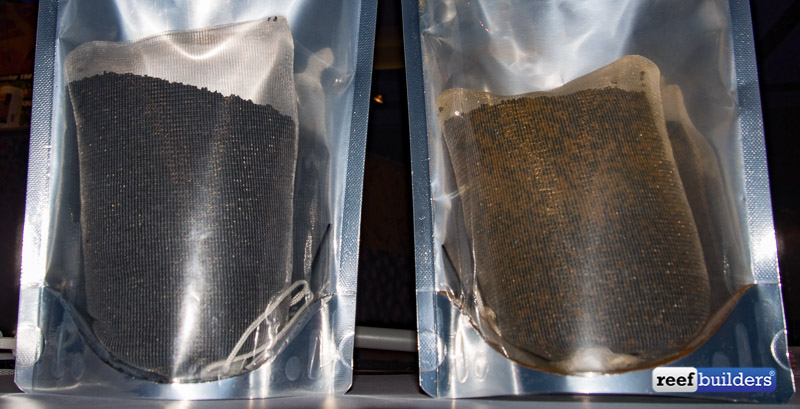GFO, which stands for Granular Ferric Oxide, is a red brown powder that is compacted into granules.
The purpose of granular ferric oxide is to inhibit algae growth by removing phosphates from the aquarium. Maintaining low phosphate levels will help prevent algae outbreaks and control growth. Serious algae outbreak is one of the most common reasons for complete tank shutdown. GFO is an essential tool and even used in public aquariums.
There are two types of GFO. Granualar GFO requires the least amount of flow to move and is good for reactors. High Capacity GFO is usually twice as dense as Granular or Pelletized GFO and more material will fit into a reactor is harder and has less dust. High Capcity GFO sense it is denser will remove about twice the phosphate compared to granular GFO.

A media reactor is a cylinder where the water is pumped down through a tube and then the cylinder is filled up from the bottom causing the GFO to slightly tumble. If the flow is too high then it can cause the GFO to break up and cloud your tank; adversely, if there is not enough flow, it can clog and be difficult to clean the reactor. Rowaphos is just a brand of GFO. If you can’t get your hands on GFO, then PhosGuard is a good alternative.
You may want to consider GFO if you have algae problems that your current filtration or maintenance plan cannot tackle. It is helpful in systems with lots of fish or systems that require ample feeding such as azooxanthelle specific tanks.

As a general rule of thumb it is good to replace the GFO once a month but you can also test the phosphate level of the water coming out of the return hose of the media reactor to be sure it is zero. If you test the phosphate then you can be sure you are getting the maximum usage of your media.

Activated carbon can also be used simultaneously with GFO. It can be placed on top of the GFO and you can determine the ration of carbon to GFO depending on your phosphate levels.
After filling the media reactor, the media needs to be rinsed so it does not cloud your tank. You can place a bucket next to your aquarium and run tank water through the reactor until the water comes out clean and I have also seen people use tap water in their sink to rinse it.
If you are having algae or cyanobacteria issues and a skimmer just isn’t taking care of the job, you may want to start running a GFO reactor. There are other ways to lower your nutrients but it usually also requires a skimmer, whereas a GFO reactor does not.
GFO is an easy simple way to lower your nutrients, it does not take up much space in your sump, and initially, it is not expensive. Consider GFO as another tool of filtration that helps your reef tank thrive.




